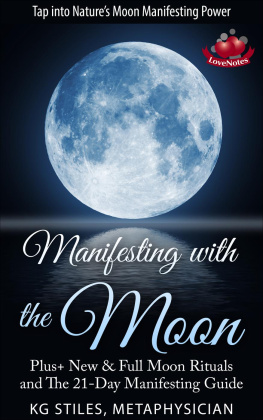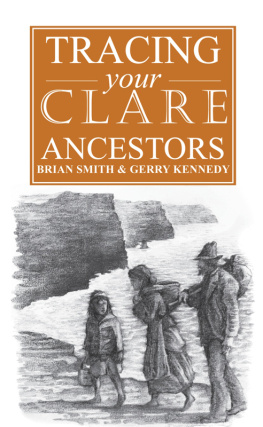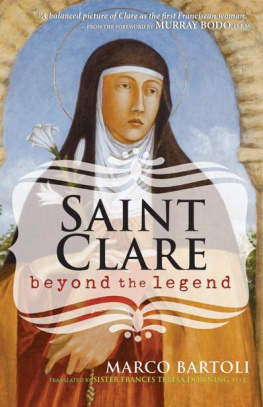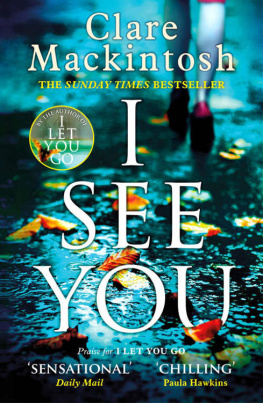Clare Vanderpool - Moon Over Manifest
Here you can read online Clare Vanderpool - Moon Over Manifest full text of the book (entire story) in english for free. Download pdf and epub, get meaning, cover and reviews about this ebook. year: 2010, publisher: Delacorte Press, genre: Detective and thriller. Description of the work, (preface) as well as reviews are available. Best literature library LitArk.com created for fans of good reading and offers a wide selection of genres:
Romance novel
Science fiction
Adventure
Detective
Science
History
Home and family
Prose
Art
Politics
Computer
Non-fiction
Religion
Business
Children
Humor
Choose a favorite category and find really read worthwhile books. Enjoy immersion in the world of imagination, feel the emotions of the characters or learn something new for yourself, make an fascinating discovery.
- Book:Moon Over Manifest
- Author:
- Publisher:Delacorte Press
- Genre:
- Year:2010
- Rating:4 / 5
- Favourites:Add to favourites
- Your mark:
- 80
- 1
- 2
- 3
- 4
- 5
Moon Over Manifest: summary, description and annotation
We offer to read an annotation, description, summary or preface (depends on what the author of the book "Moon Over Manifest" wrote himself). If you haven't found the necessary information about the book — write in the comments, we will try to find it.
Moon Over Manifest — read online for free the complete book (whole text) full work
Below is the text of the book, divided by pages. System saving the place of the last page read, allows you to conveniently read the book "Moon Over Manifest" online for free, without having to search again every time where you left off. Put a bookmark, and you can go to the page where you finished reading at any time.
Font size:
Interval:
Bookmark:
All writers strive to create a good story with colorful characters, a vivid setting, and interesting plot twists and turns. But the elusive element is voice. So first and foremost, I want to acknowledge the four people whose voices I have heard from the time and place in which Moon Over Manifest is set: my maternal grandparents, Noah and Mary (Hughes) Rousseau, along with my grandfathers cousins Velma and Ivan DeVore. Their voices and their stories, which I heard as a young girl, are the heart and soul of this book. In the same vein, I thank my parents, Leo and Mary Dean Sander. This book is dedicated to them. You often hear writers thanking the people without whom their books could not have been written. My parents taught me not to waste time trying to figure out if I could do something. Just figure out how to get it done. Without their confidence I would have quit many times over. Eventually, I would have even quit quitting. I guess that means I wouldnt even have started. So I thank them, for giving me the fortitude to keep trying and figure out how to get it done.
Thank you to my wonderful agent, Andrea Cascardi, for your friendship and guidance. You are a trouper. To Michelle Poploff, every writers dream editor. And to her assistant, Rebecca Short. You both made my first experience in publishing a book pleasant and rewarding.
Special thanks to my group of writing friends, Debra Seely, Dian Curtis Regan, and Lois Ruby, for your many readings of this book, both in and out of sequence, for your comments that improved the book, and for your years of support and encouragement. To my friends at the Milton CenterEssie Sappenfield, Jerome Stueart, Mary Saionz, David and Diane Awbrey, David and Virginia Owens, Naomi Hirahara, Gordon Houser, Christie Breault, Nathan Filbert, Bryan Dietrichall members of my first critique group, where I cut my teeth writing words on a page and listening to what others had to say about them: Thanks for all you had to say.
To Marcia Leonard for her help in shaping this book.
To Kathy Parisio for the phrase she and her siblings made up as kids, which became Miss Sadies curse: Ava grautz budel nocha mole. I hope my translation of it was acceptable to all. And to Tim Brady for his often-used admonition to our friend Ned Blick in college: Ned, youre heading down the path to perdition. Of course, if Ned was going, we all wanted to tag along!
To my group of book club girlfriends, who insisted that someday, they would read one of my books for book club. That meant a lot. I wasnt going to name them, but one recently asked to make sure I knew how to spell all their names. So in no particular order, and hopefully spelled correctlyAnnmarie Algya, CY Suellentrop, Dawn Chisholm, Julie Newton, Vicki Kindel, Cara Horn, Chandi Bongers, Gigi Phares, Molly Cyphert, Angie Holladay, and Kathy Kryzer.
And to my little sister, Annmariebecause shes a lot of fun and she would be miffed if she didnt get special mention. But really because I will never be able to write about a spunky young girl without her being two-thirds Annmarie.
Finally, there is a small but important group of people who bring joy to every day of my life. Luke, Paul, Grace, and Lucy Vanderpool. Youre the best.
And really finally, to my husband, Mark. For being always true blue.
Clare Vanderpool grew up reading books in unusual places: dressing rooms, the bathroom, walking down the sidewalk (sometimes into telephone poles), church, math class. She suspects that some of her teachers knew she had a library book hidden behind her textbook, but the good ones didnt let on.
Clare holds degrees in English and elementary education and teaches a summer writing camp for kids. She loves recommending wonderful books to young readers.
Clare lives in Wichita, Kansas, with her husband and four children.
Like many readers of historical fiction, I find it interesting to know what is fact and what is fiction. Sometimes what I find even more interesting is where the fact or fiction came from.
Manifest, Kansas. Moon Over Manifest is a story that came from my family roots. The town of Manifest, although very real and vivid in my mind, is both fact and fiction. Manifest is based on the town of Frontenac, Kansas. Originally, I chose the town of Frontenac as the setting for my story because my grandparents were from that area of southeast Kansas. But in doing so, I stumbled upon a community that was rich in color and history.
I decided to change the name of the town to allow more flexibility in what I could include in it, but other than being a bit smaller and having fictional churches and schools, Manifest is basically the same. Frontenac was a mining town that in 1918 was made up of immigrants from twenty-one countries. In fact, at that time, only 12 percent of the people living in Frontenac had parents born in America. Coal mining was the main industry in Frontenac, and family stories tell of company vouchers and the control of the mine in the town.
The Bone Dry Bill of 1917 made Kansas a dry state. This meant alcohol was illegal in Kansas well before Prohibition took effect nationwide. However, the two counties in the far southeast corner of Kansas, Cherokee and Crawford, often called the Little Balkans, were known to be the bootlegging capital of the Midwest.
Orphan trains. Ned arrived in Manifest on what was known as an orphan train. Many orphaned children found themselves on trains heading from the East Coast to the Midwest, where they were adopted by families they didnt know. Some children, like Ned, were adopted into loving homes; however, not all were as fortunate. Some children were adopted to be used primarily as hired hands on farms or to help out as domestic servants.
Spanish influenza started out as a highly contagious flu that could infect hundreds of people in a matter of hours. Experts believe that it originated at Camp Funston, a military base near Manhattan, Kansas, in March of 1918. Initially, it was not known to be fatal, but after troop ships carried the illness overseas during World War I, the virus mutated into a much deadlier strain. The same troop ships carried the virus back to the United States, and this began the first wave of a worldwide pandemic that took millions of lives before it ran its course.
Immigrants. In my research into immigrants passing through Ellis Island, I did not come across any story like that of Ned and Miss Sadie. However, Ellis Island has been called both the Island of Hope and the Island of Tears. There are countless tales of heartbreak and hardship that immigrants encountered when making their journey to America, not unlike the one I have imagined in this story.
The rest of the story
Of course most of the story is fiction. But even fiction has to come from somewhere. Many elements in the book were inspired by family stories and newspaper articles from regional papers of both 1918 and 1936.
The boot with Finns foot still in it came from a story my dad told about his work investigating airplane crashes. Among the wreckage at one crash site, he found a boot with the foot still in it.
The free ice water Mrs. Dawkins gave out came from the story of the couple who started the famous Wall Drug Store in Wall, South Dakota. They advertised free ice water during the Depression, and cars started streaming into town, bringing new business to their struggling community.
The gate to Perdition is based on a real gate that I came across on my research trip to Frontenac. It didnt say Perdition, but it did have an assortment of metal objects welded onto it: horseshoes, a pitchfork, a shovel, a spade, and two wagon wheels. I was there in the fall, so it even had two jack-o-lanterns propped on top.
Font size:
Interval:
Bookmark:
Similar books «Moon Over Manifest»
Look at similar books to Moon Over Manifest. We have selected literature similar in name and meaning in the hope of providing readers with more options to find new, interesting, not yet read works.
Discussion, reviews of the book Moon Over Manifest and just readers' own opinions. Leave your comments, write what you think about the work, its meaning or the main characters. Specify what exactly you liked and what you didn't like, and why you think so.












